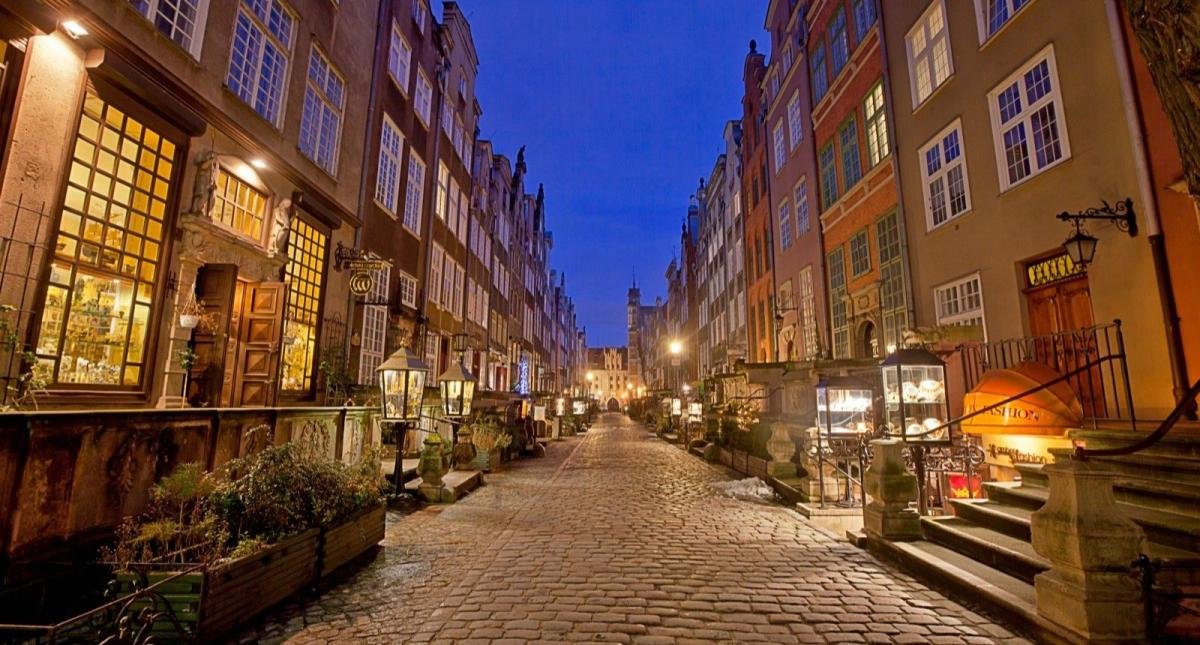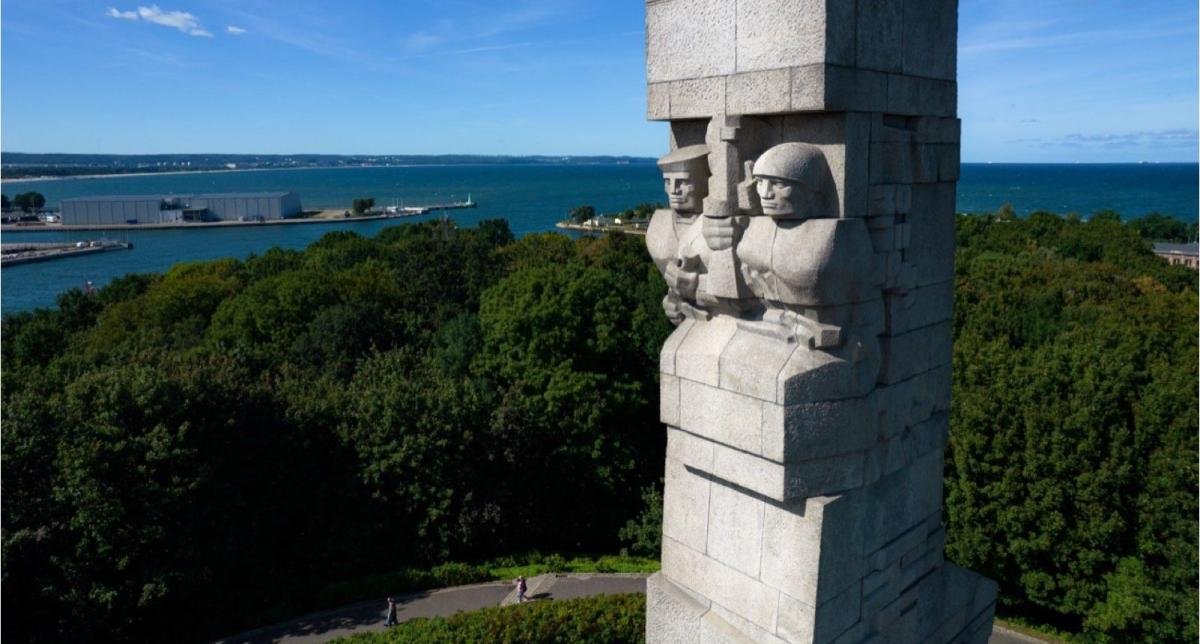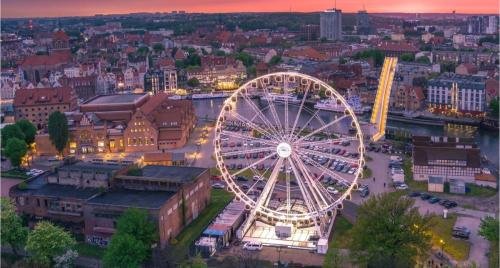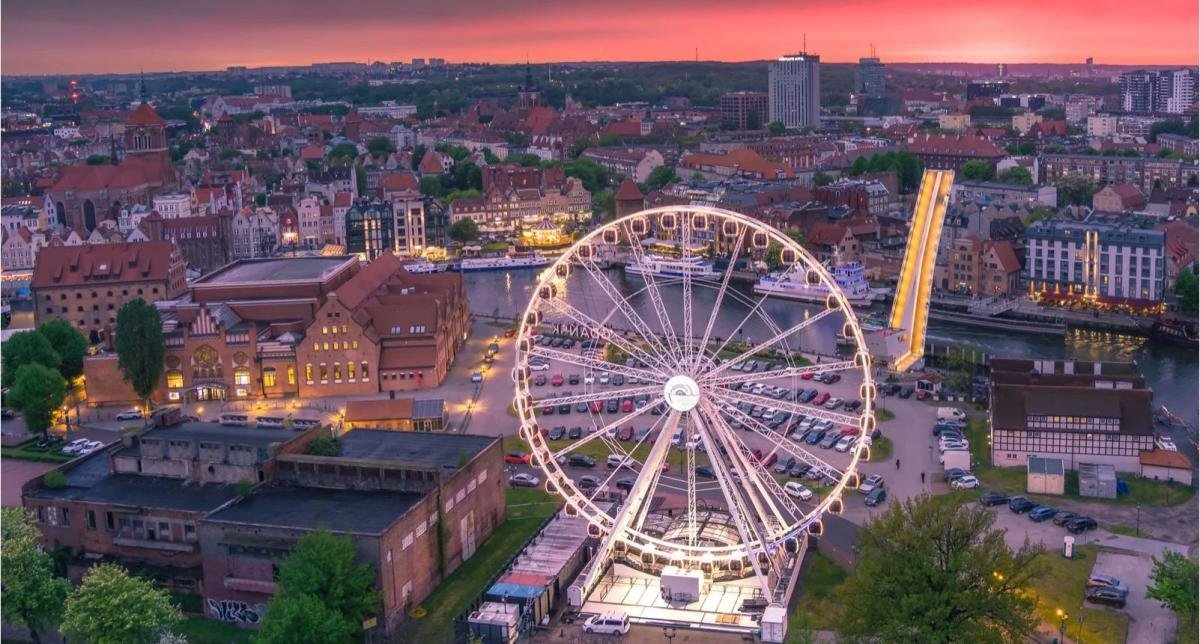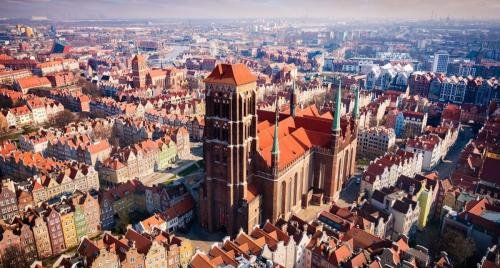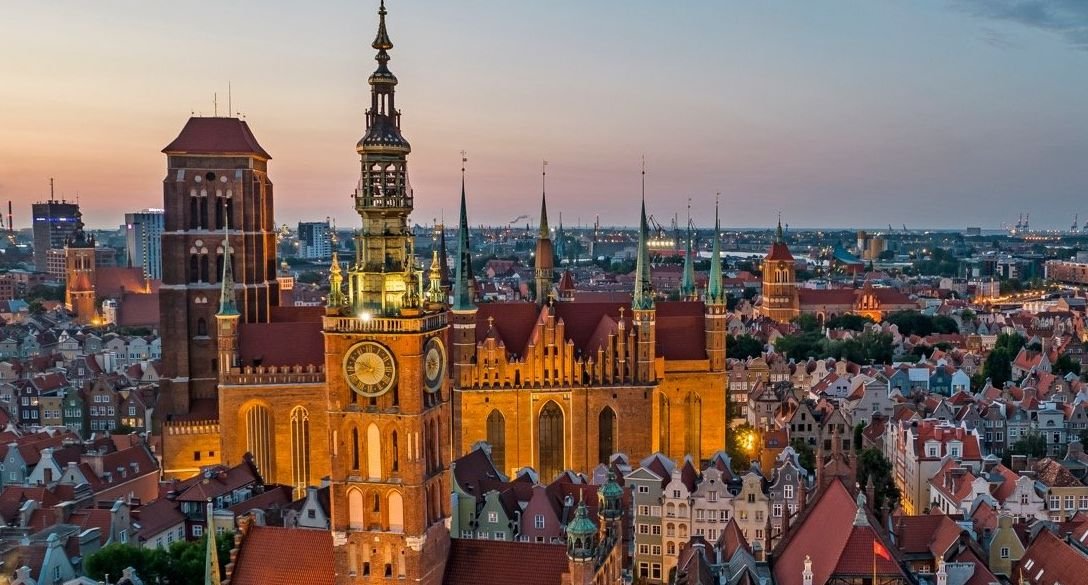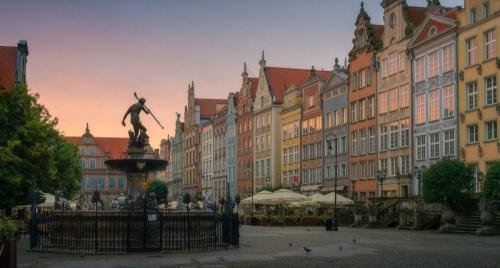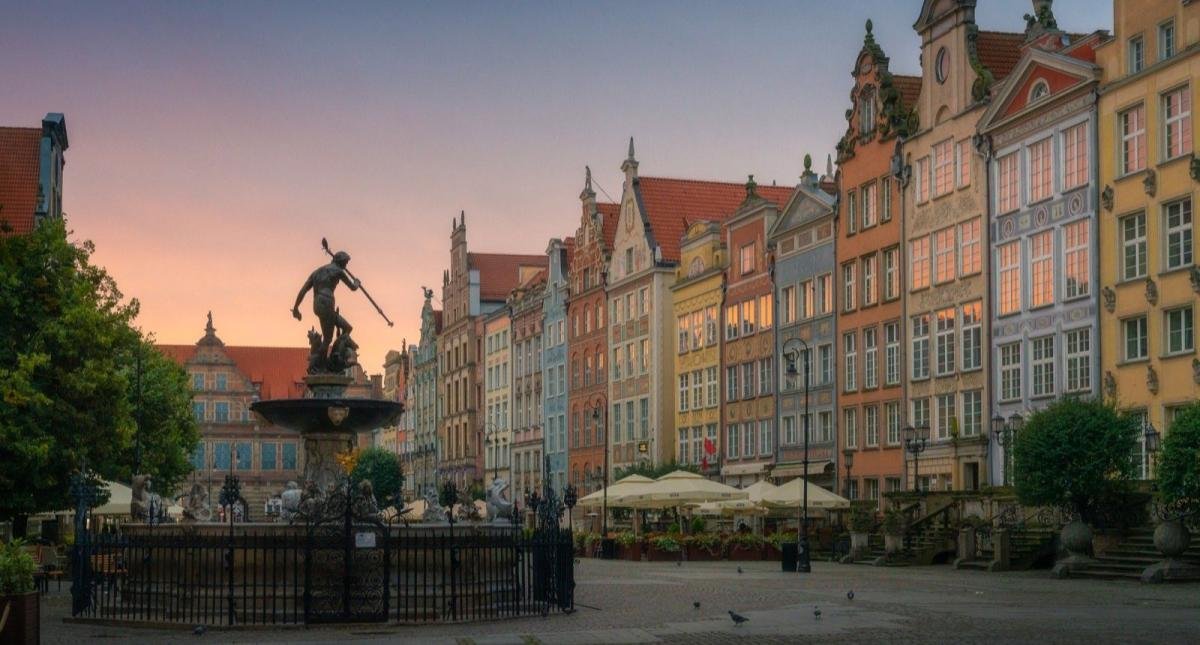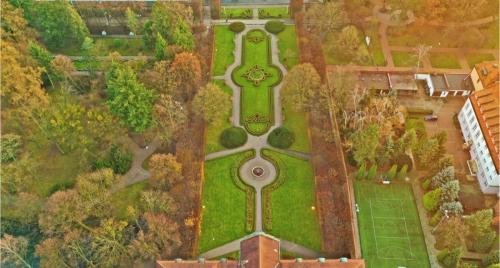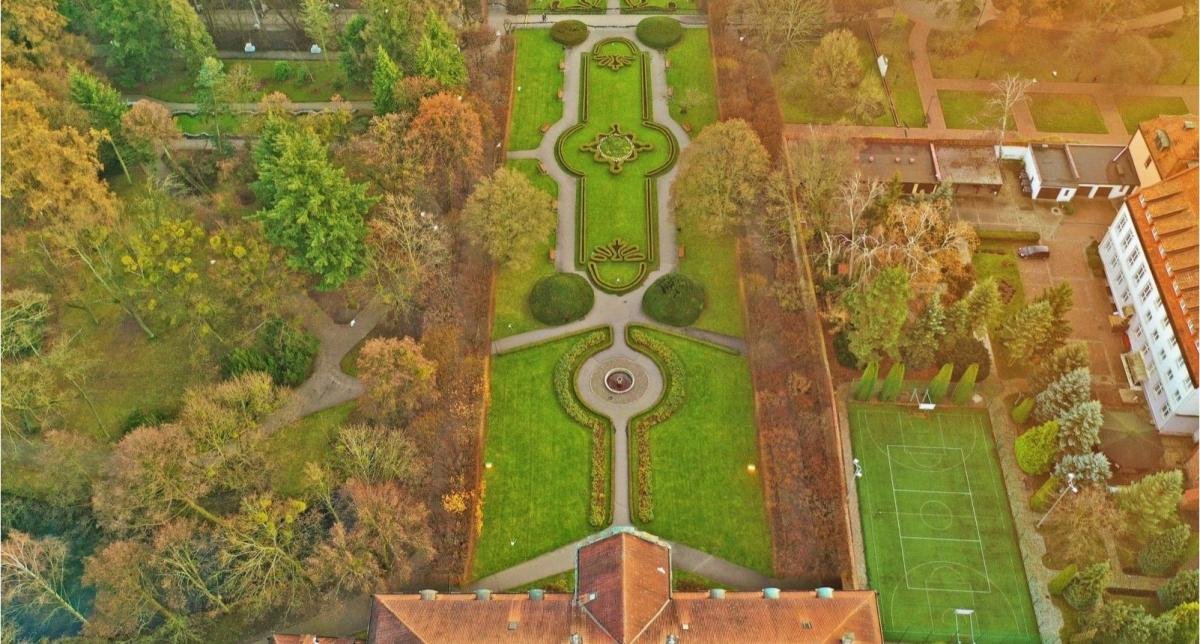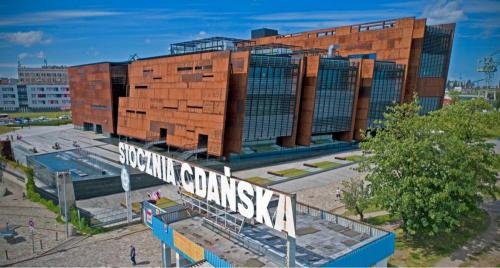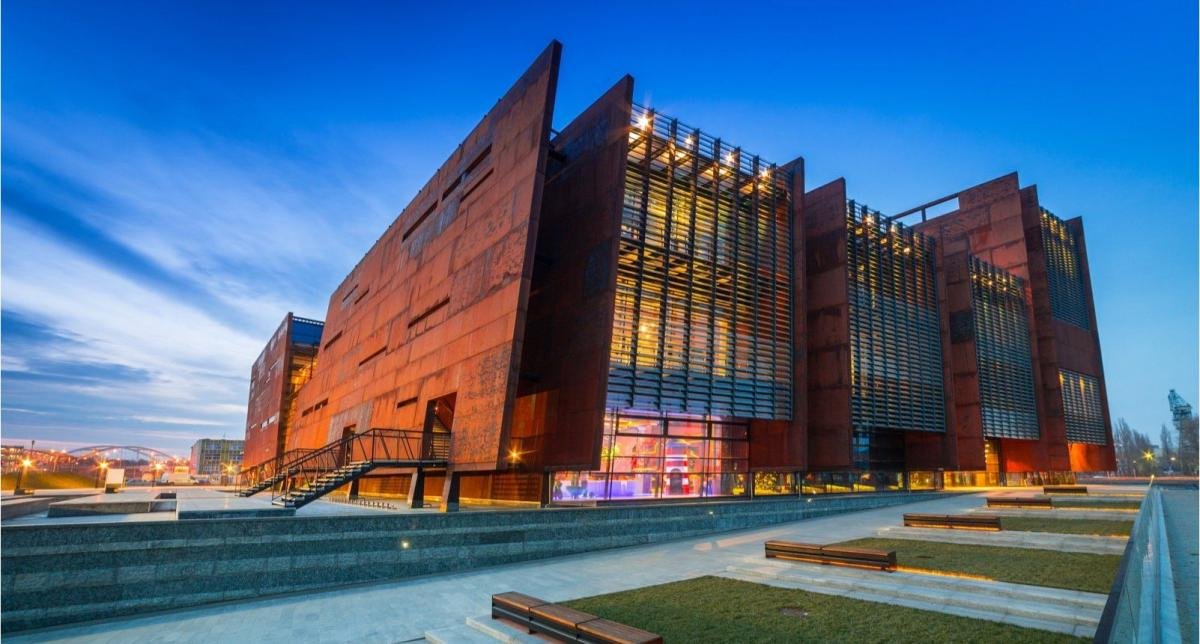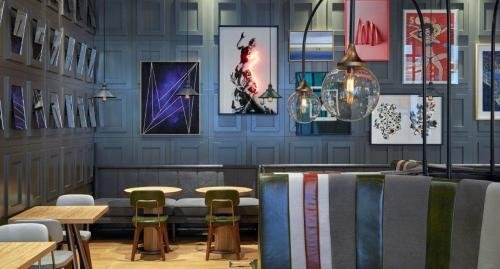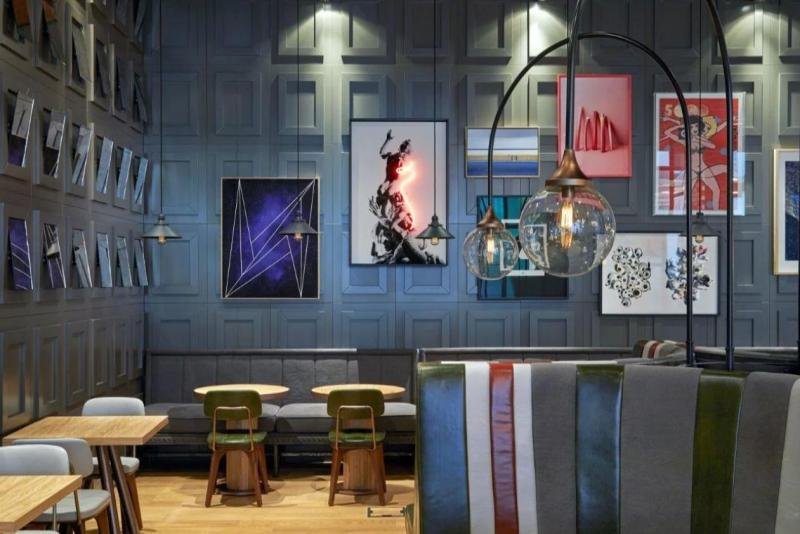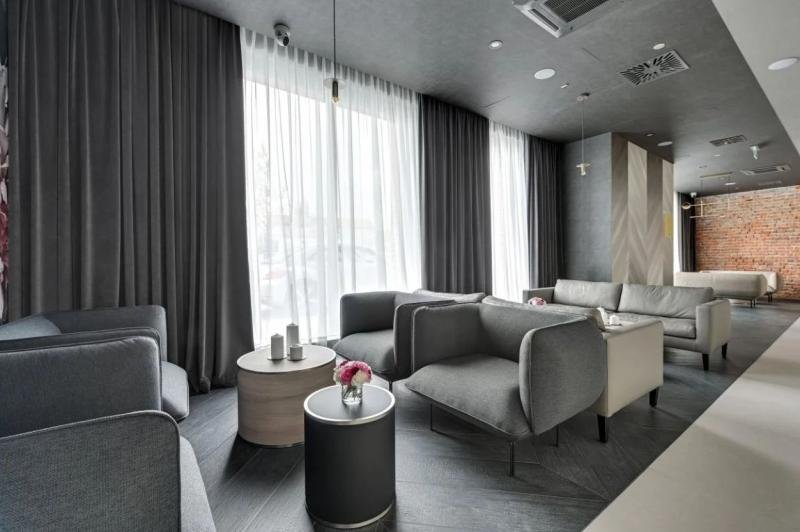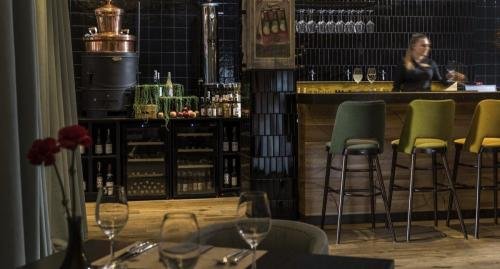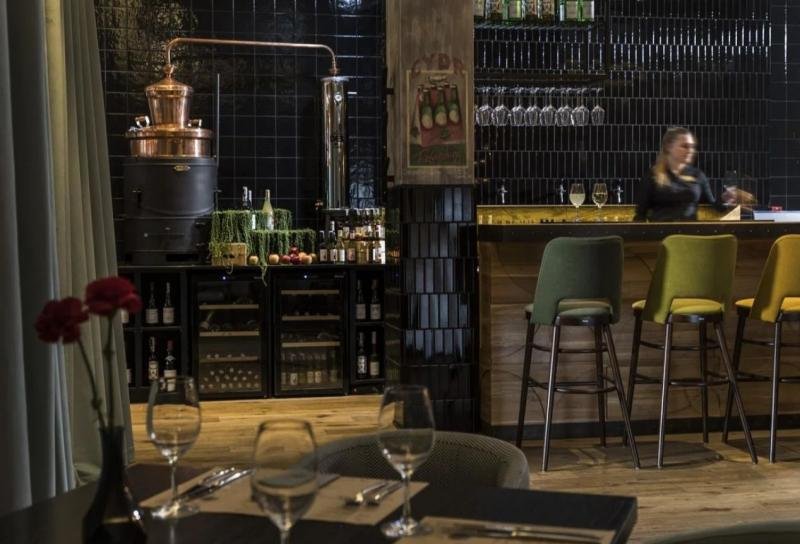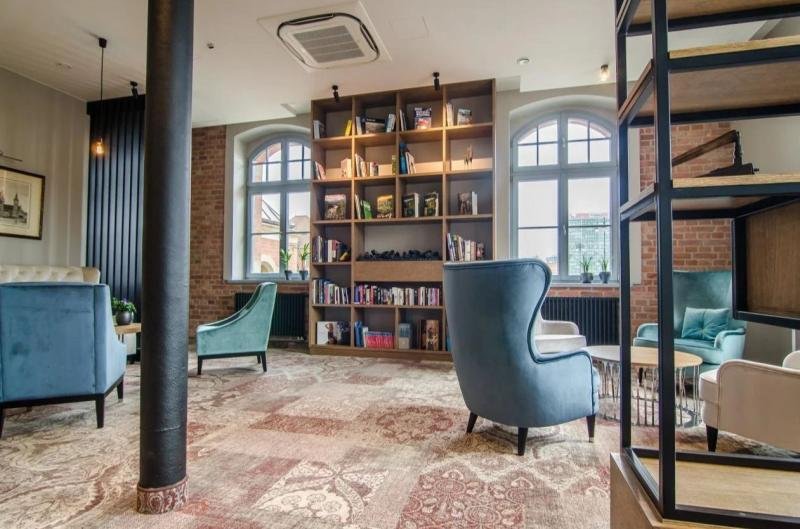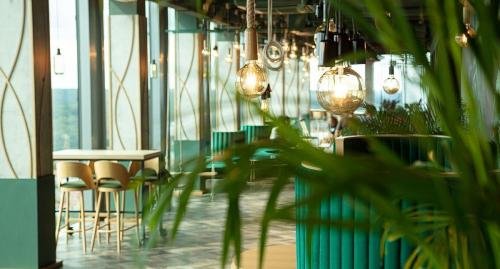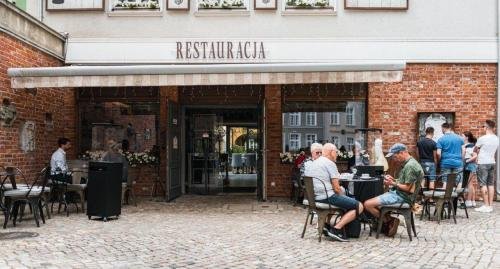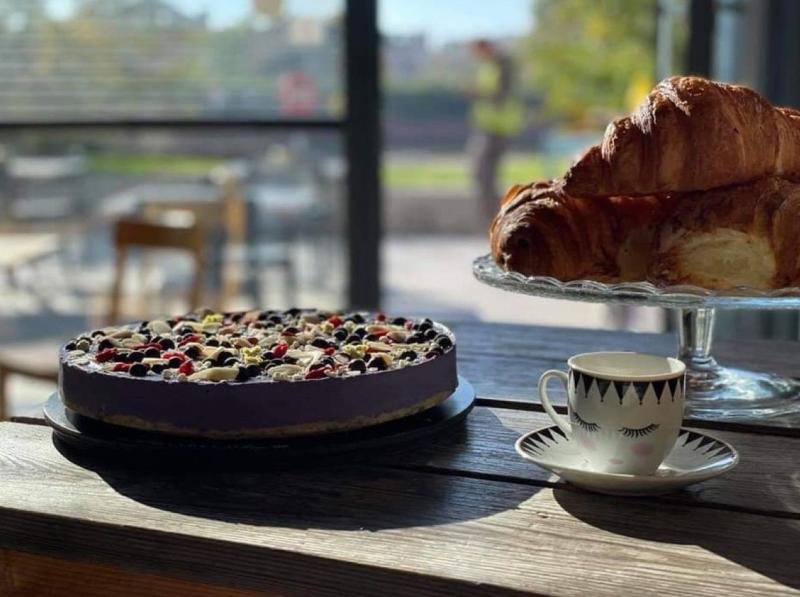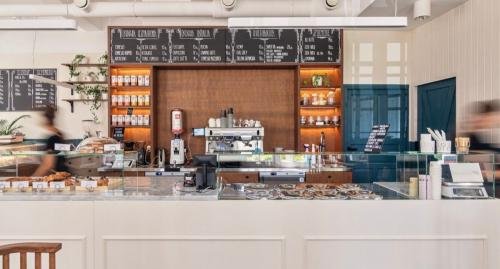Paris
A practical guide to what to do in Paris
From the menu below choose a category
Singapore: Asia’s Blueprint of Precision, Pulse, and Infinite Possibility
Singapore doesn’t bask in nostalgia—it builds the future. Dressed in glass and steel, cooled by tropical gardens, and laced with flavors from every shore, this city-state is both laboratory and lotus, temple and tech park, metropolis and meditation. Beneath its polished infrastructure lies a soul forged by migration, resilience, and vision. Singapore doesn’t shout—it executes. With poise, with pragmatism, and with an elegance that emerges not from age, but from mastery of reinvention.
Architectural Majesty: From Colonial Grandeur to Vertical Gardens
Begin in Marina Bay, where the skyline forms a postcard to tomorrow. The Marina Bay Sands towers—three spires joined by a sky-high infinity pool—are more than architecture; they’re ambition solidified in steel. Below, the ArtScience Museum unfolds like a lotus, echoing a nation that balances innovation with introspection.
Step into Gardens by the Bay, where supertrees sprout solar panels and orchids bloom in cloud forests cooled by technology. And yet, Singapore’s beauty isn’t only in the futuristic. It lingers in the shuttered colonial verandas of Fullerton Hotel, the neoclassical Victoria Theatre, and the quiet symmetry of Raffles Hotel, where gin and history swirl in a single glass.
In Singapore, architecture is not a statement—it’s a dialogue between heritage and what comes next.
Cultural Soul: Where Heritage is a Mosaic, Not a Museum
Singapore is a multicultural masterpiece—not by accident, but by careful design and daily devotion. Chinese, Malay, Indian, Eurasian, and Peranakan traditions thread through the city like silk through a loom.
Explore Chinatown, where incense curls from temples and lanterns light narrow lanes of herbal shops and hawker stalls. In Little India, murals, marigolds, and mantras swirl around the vivid Sri Veeramakaliamman Temple. In Kampong Glam, Islamic art, boutique cafés, and the golden dome of the Sultan Mosque merge into a tapestry of modern Muslim identity.
And during Deepavali, Hari Raya, Vesak Day, or Chinese New Year, the entire city joins in—because in Singapore, diversity is not just policy—it’s personal.
Districts with Character: Precision Wrapped in Personality
Singapore’s districts aren’t zones—they’re living personalities, each one cultivated with care.
Tiong Bahru is all quiet Art Deco curves and indie bookstores, a soft-spoken creative retreat. Orchard Road struts like a Milanese catwalk, where luxury brands gleam under tropical trees. In contrast, Joo Chiat offers a riot of Peranakan townhouses and laksa joints—elegant disorder, curated by culture.
Bugis buzzes with youthful rebellion. Clarke Quay pulses with nightlife beside rainbow-painted warehouses. Holland Village, Katong, Serangoon Gardens—each corner of the city hums with its own frequency.
Here, order and individuality are not opposites—they're engineered to coexist.
Spiritual Quietude: Sacred Geometry in a Hypermodern World
In a city known for speed and polish, sanctuary still exists—sometimes hidden, sometimes towering.
Visit Thian Hock Keng Temple, built without nails, where dragons guard the gates and blessings float on incense smoke. Or find peace at the Buddha Tooth Relic Temple, where gold glimmers in candlelight and silence wraps around saffron robes.
In Lian Shan Shuang Lin Monastery, Chinese pagodas whisper from banyan groves. St. Andrew’s Cathedral, white and soaring, holds Anglican hymns in a tropical hush. And Sri Mariamman Temple, the oldest Hindu temple in Singapore, still bursts with festivals, fire, and faith.
Singapore proves that progress and prayer, skyscrapers and stillness, can breathe side by side.
Cuisine with Precision: Where the World is Served on a Plate
Singapore’s kitchen is a culinary diplomacy table, and the hawker centre is its parliament. Michelin-starred street food? Only here.
Start with Hainanese chicken rice—a study in balance and simplicity. Taste char kway teow, oily and glorious, or laksa, creamy with coconut and bold with sambal. Sample satay, roti prata, nasi lemak, or Peranakan delicacies like ayam buah keluak—where nut, tamarind, and spice swirl in rich harmony.
At the other end of the spectrum, fine dining dazzles. Try Odette, Burnt Ends, or Les Amis, where Singaporean precision meets global finesse. Whether in a hawker centre or rooftop bar, food here is memory, identity, and ambition on every fork.
Conclusion: Singapore, The Symphony of What’s Possible
Singapore is not a city that begs to be romanticized. It is crafted, curated, and deeply human beneath the efficiency. It doesn’t ask for admiration—it commands respect, and then surprises you with softness, depth, and grace.
For the traveler who values order without sterility, luxury without excess, and a place where every inch speaks of vision—Singapore is more than a destination. It is a manifesto in motion.
Come for the skyline. Stay for the soul.
And let Singapore show you how the future feels—when built with memory and meaning.
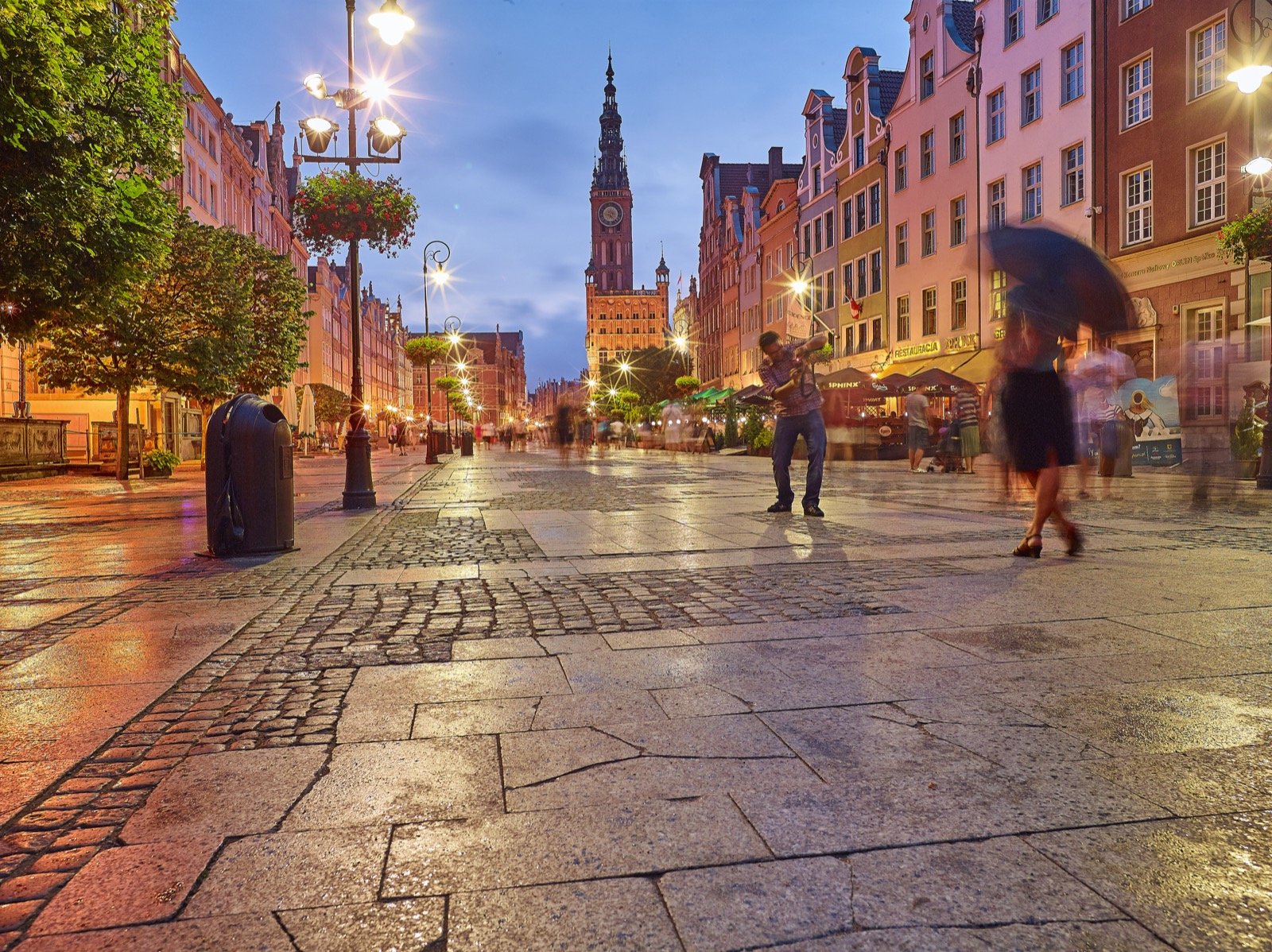
The Bund (外滩 – Wàitān)
Where History Faces the Future
Here, along the Huangpu River, East and West meet in silent conversation. Colonial facades line one bank—stoic, stone-clad, resolute. Across the water, the skyline explodes in glass and neon: the future in full bloom. Walk the promenade at dusk, when the lights awaken and time becomes fluid.
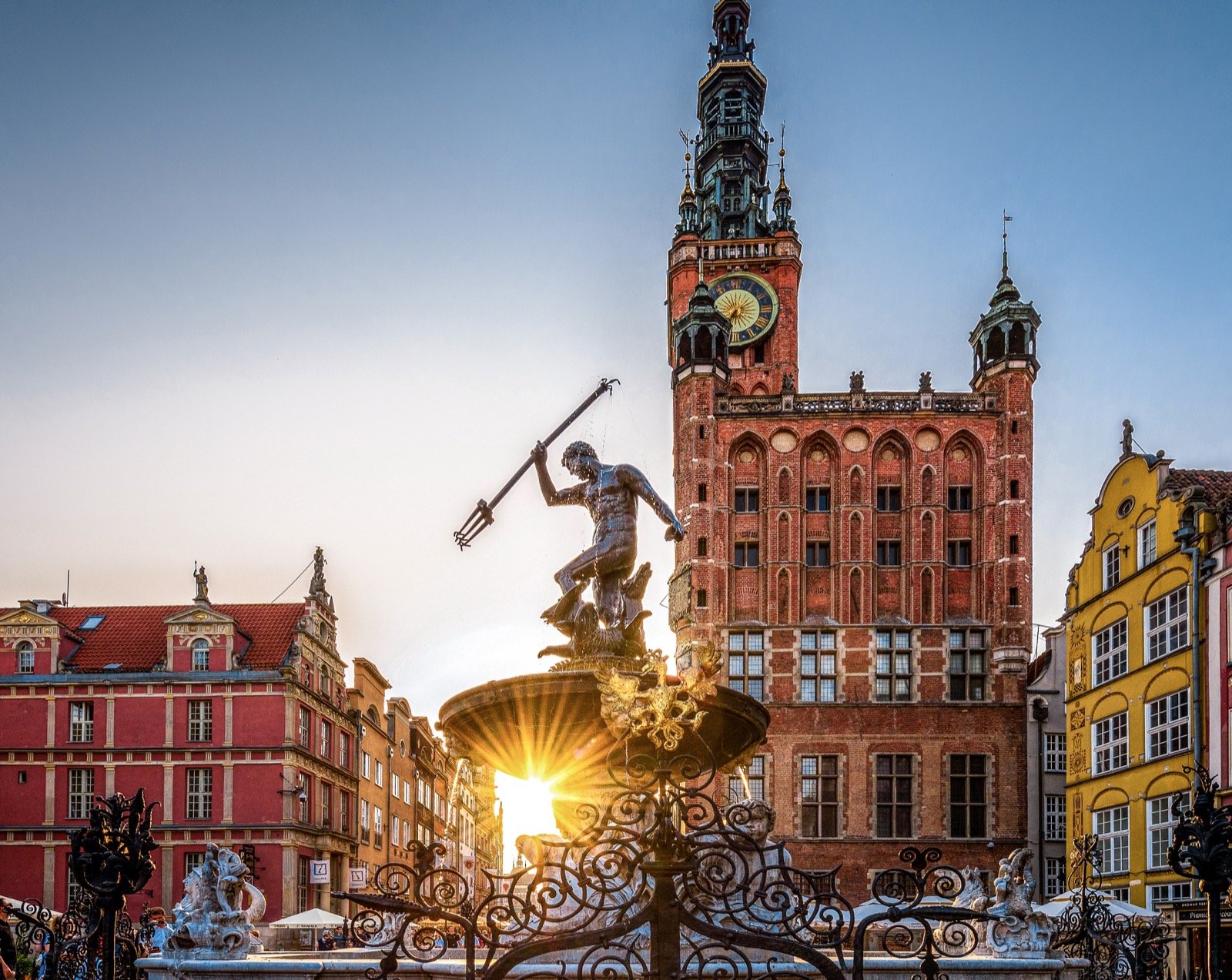
Yu Garden (豫园 – Yùyuán)
Elegance in Every Curve
In the heart of the old town lies a garden crafted not for power, but poetry. Arched bridges, moon gates, koi ponds, and sculpted rockeries turn each step into a stanza. Built during the Ming dynasty, Yu Garden whispers in the language of stillness.
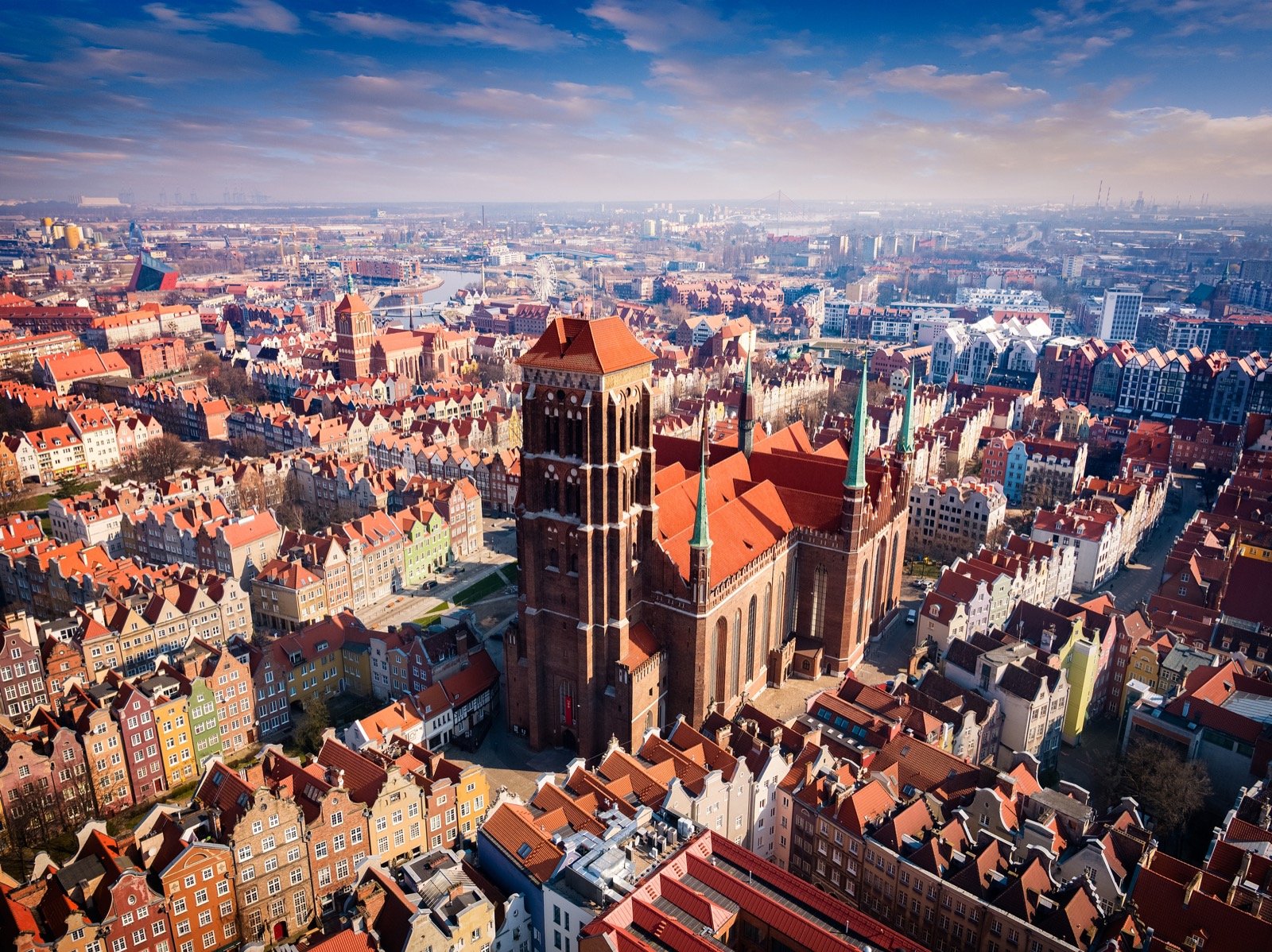
Oriental Pearl Tower (东方明珠塔 – Dōngfāng Míngzhū Tǎ)
Futurism in Orbit
Like beads suspended on a cosmic thread, the Pearl Tower pierces the sky with playfulness and pride. Its observation decks offer views that feel like science fiction—the city a living circuit board, humming with ambition.
Shanghai Museum (上海博物馆 – Shànghǎi Bówùguǎn)
The Soul in Stone and Silk
In the shape of an ancient bronze vessel, this museum holds China's heartbeat. Bronze, porcelain, jade, calligraphy—each object speaks in silent tones. Not a museum of things, but of presence. A temple to culture, finely carved.
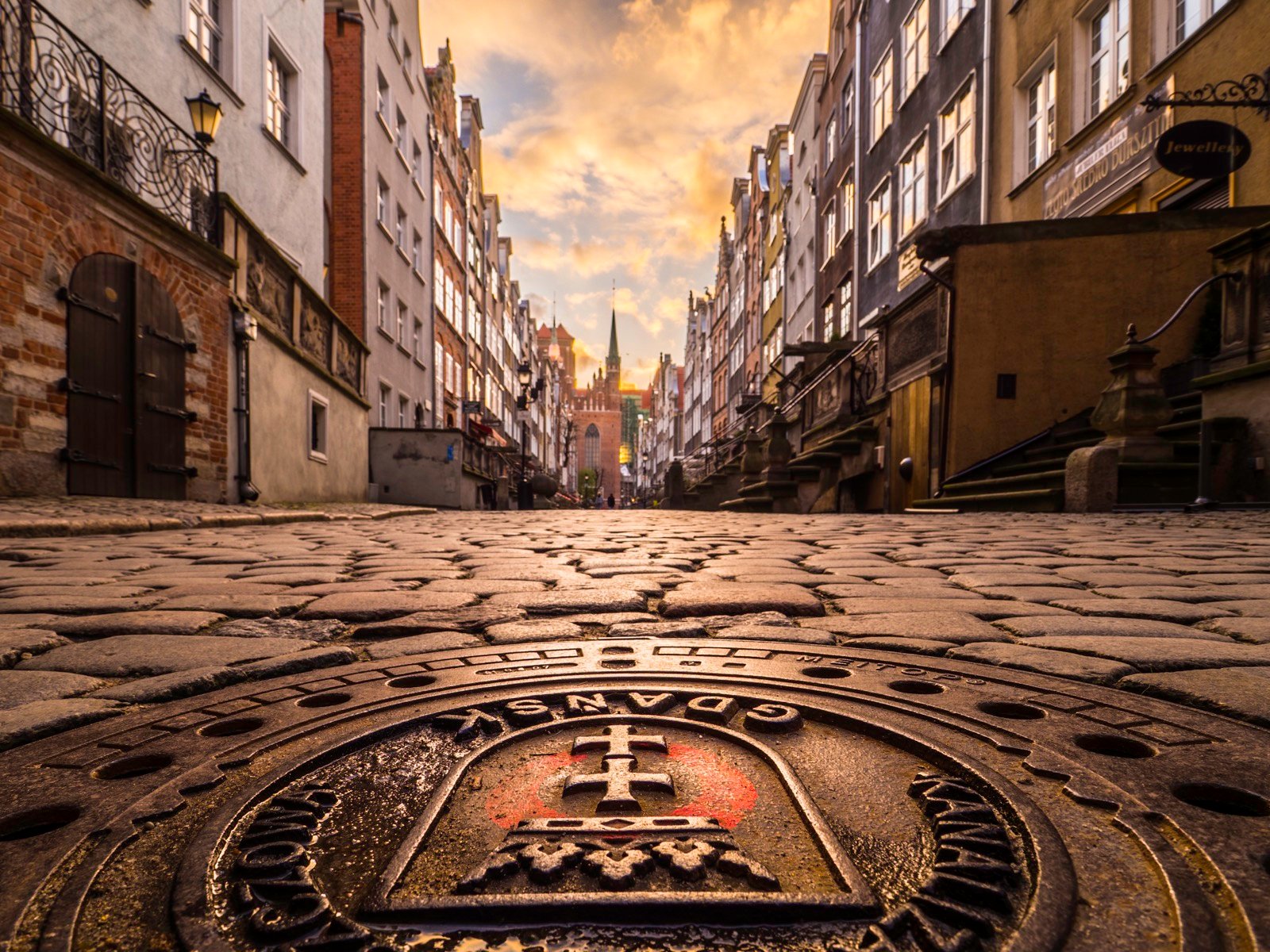

Nanjing Road (南京路 – Nánjīng Lù)
Avenue of Dazzle
Stretching from the Bund to People's Square, this boulevard is Shanghai’s golden thread—draped in light, music, and motion. From luxury boutiques to street snacks sizzling on skewers, it's where desire strolls hand in hand with spectacle.

Tianzifang (田子坊)
Art in the Alleys
Wander the tangled backstreets of Tianzifang, where Shikumen architecture shelters cafés, ink studios, and design shops. Lanterns glow above narrow paths, and creativity hums like conversation. The past here has not been erased—it has been painted over in bold strokes.
Longhua Temple (龙华寺 – Lónghuá Sì)
Chimes Beneath the Pagoda
The scent of incense and sound of bronze bells drift through this ancient temple, Shanghai’s oldest. Beneath sweeping eaves and golden Buddhas, monks chant as the world spins on. Serenity endures in the rhythm of prayer.
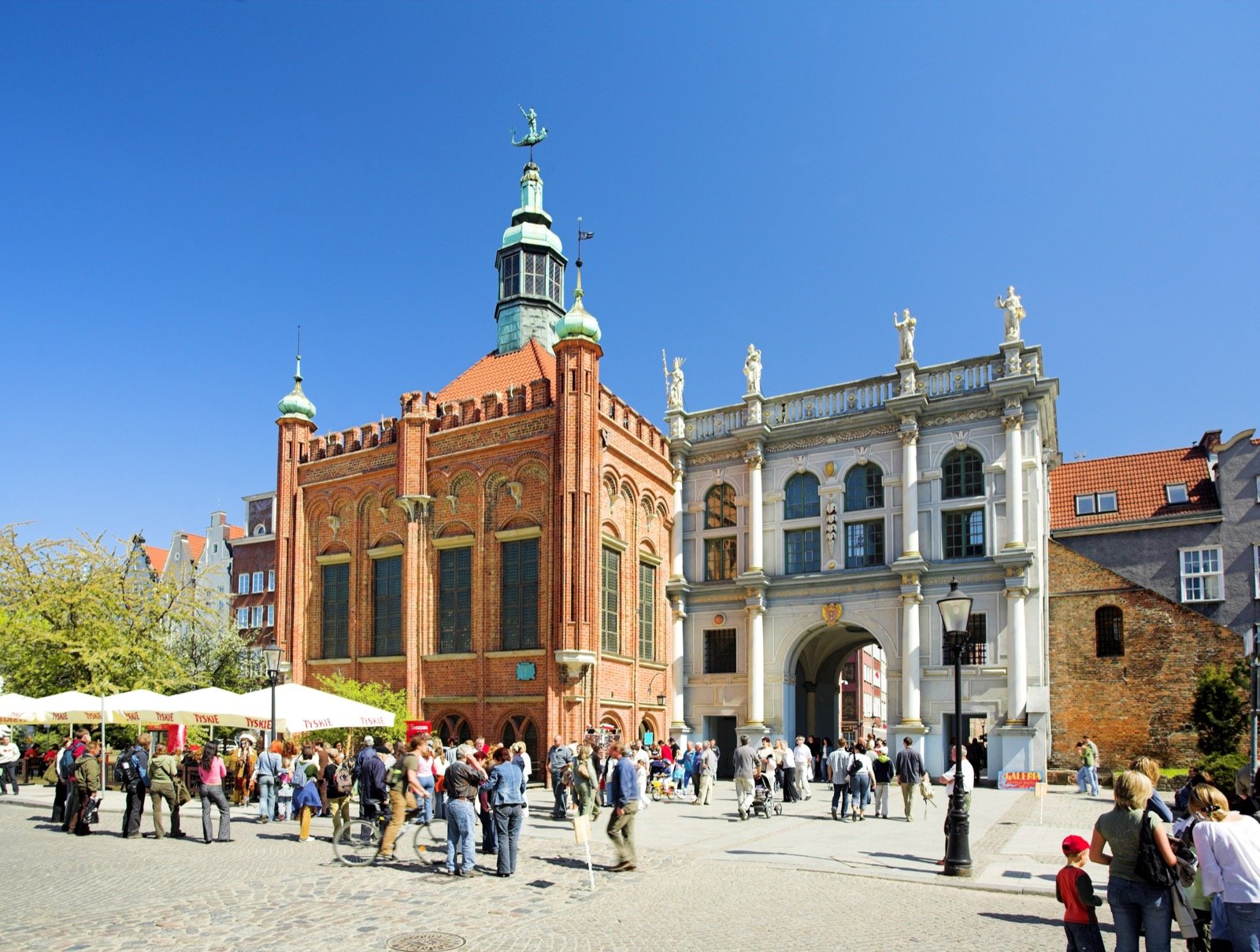
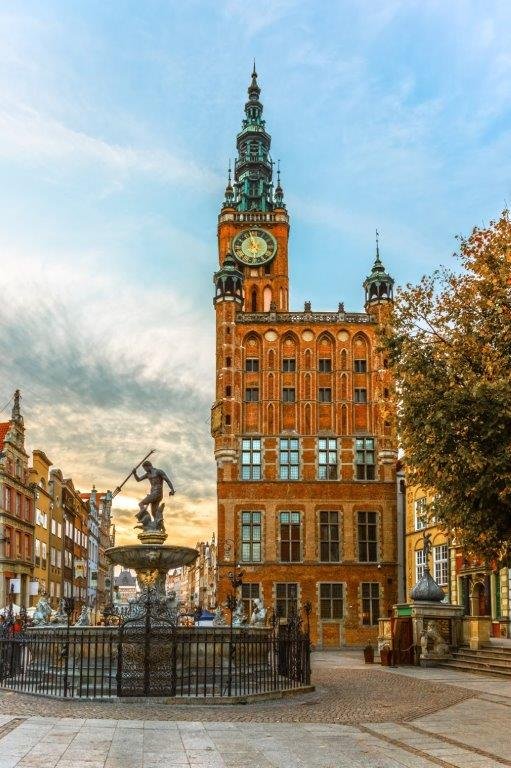
Shanghai Tower (上海中心大厦 – Shànghǎi Zhōngxīn Dàshà)
The Spiral of Sky
Second only to Burj Khalifa in height, this twisting giant of glass and wind reaches for the clouds with sculpted grace. From its observation deck, the city spreads like circuitry—endless, intricate, electric.
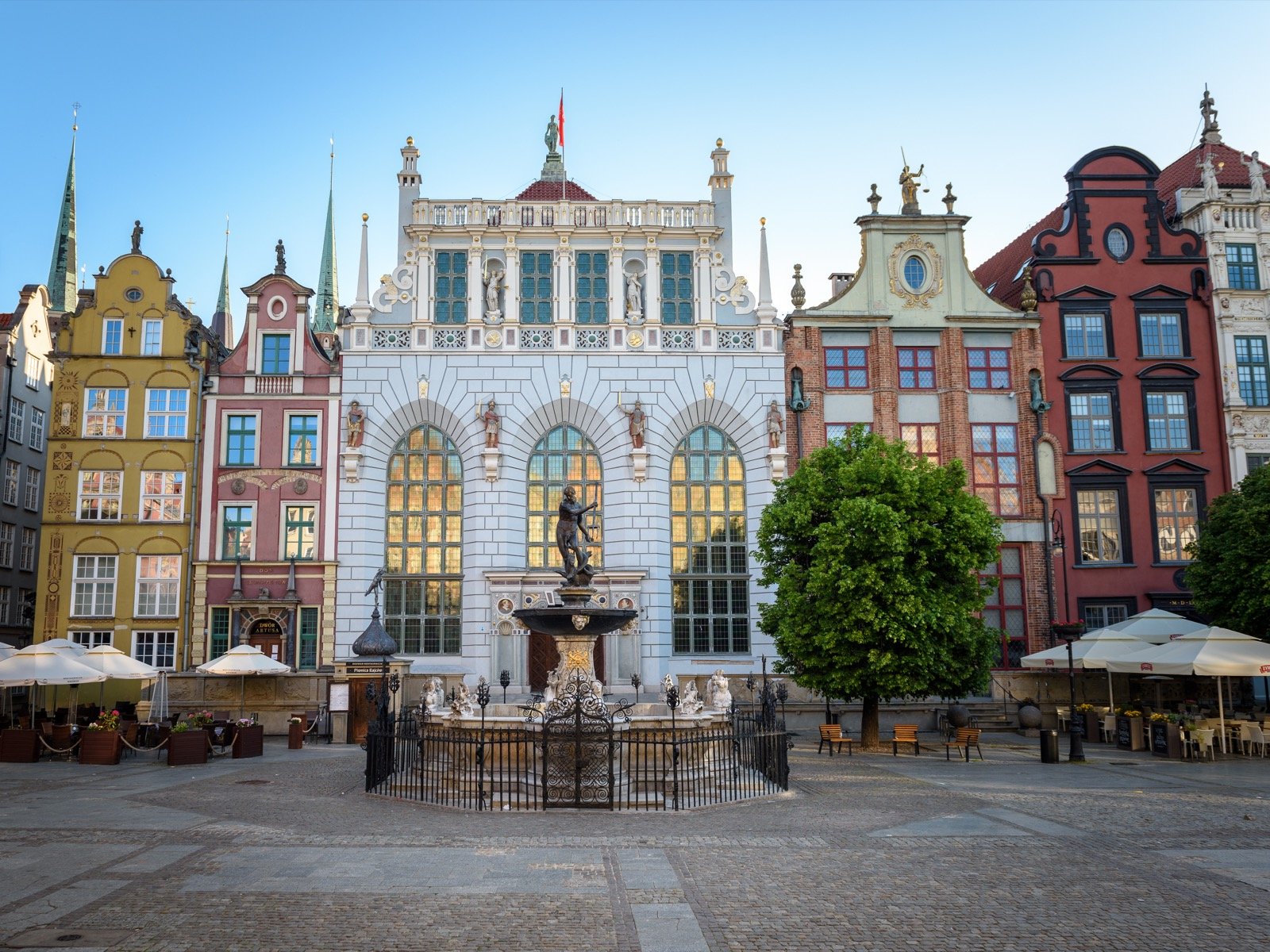
Fuxing Park (复兴公园 – Fùxīng Gōngyuán)
Where Morning Begins
Come early and you’ll see Shanghai stretch awake: tai chi in the open air, ballroom dancing under trees, chess games and flute melodies. French in layout, Chinese in soul—Fuxing Park is the quiet heart of a city that never sleeps.
Jade Buddha Temple (玉佛禅寺 – Yùfó Chán Sì)
Stillness in White Jade
Two Buddha statues, carved from Burmese jade, radiate calm within this active temple. Candles flicker, bells toll, and orange-robed monks move like water. Here, amid the chaos, is a breath held in reverence.
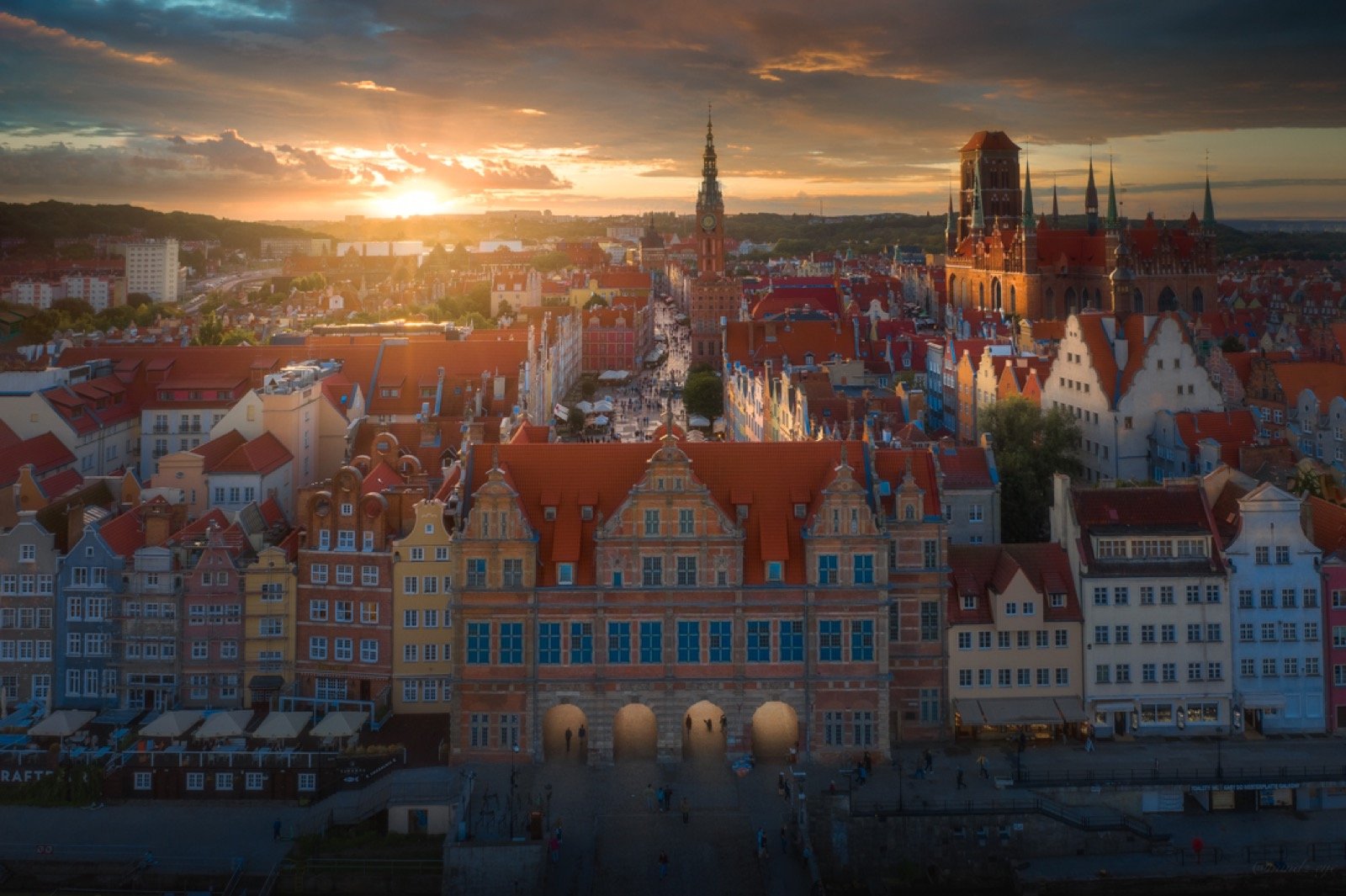
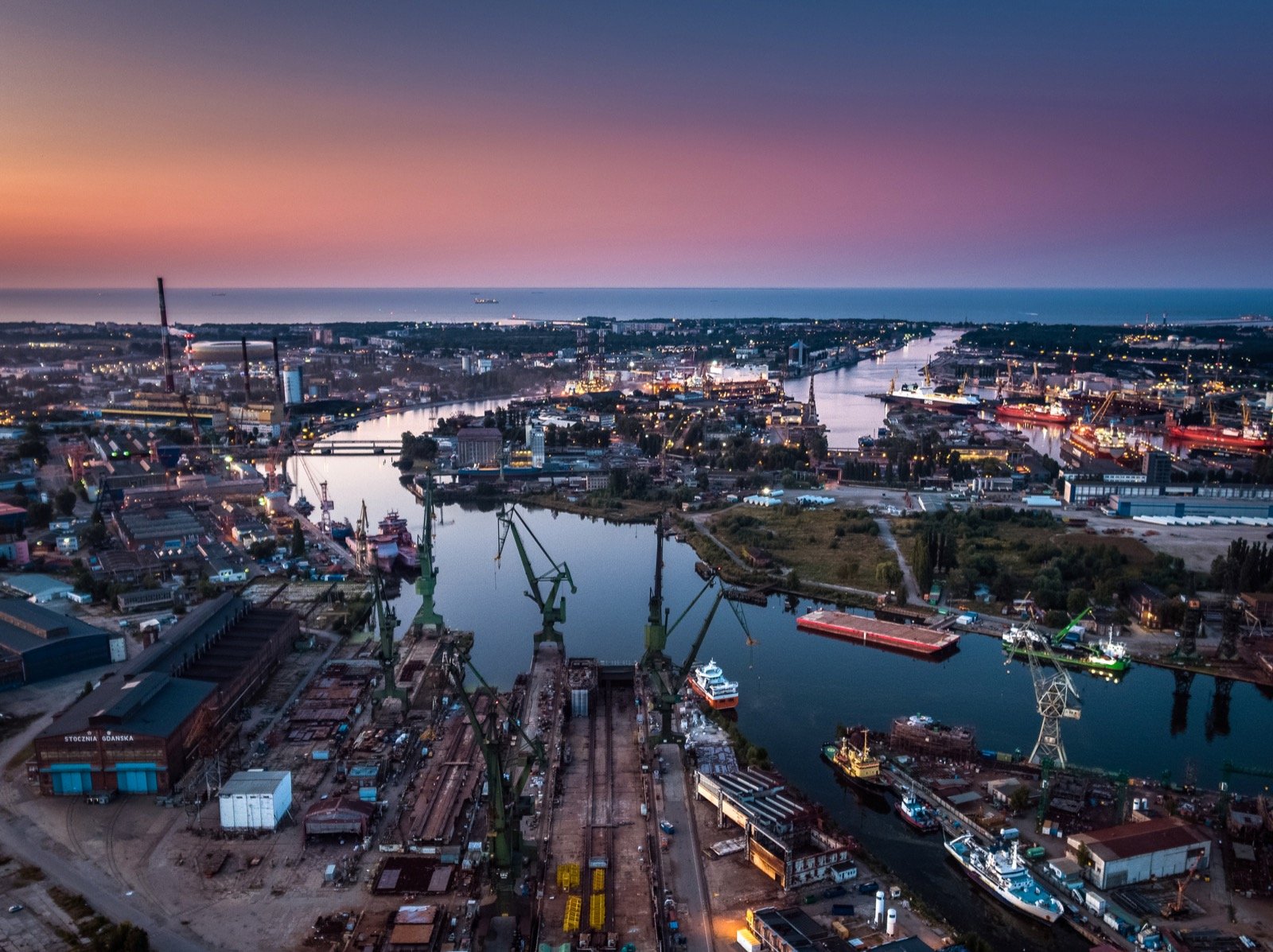
Shanghai French Concession (法租界 – Fǎ Zūjiè)
Paris Among Plane Trees
Old villas, wrought iron balconies, bakeries, and boutiques: this leafy district invites wandering without destination. Colonial and cosmopolitan, nostalgic yet new, the French Concession speaks in the dialect of shade and style.
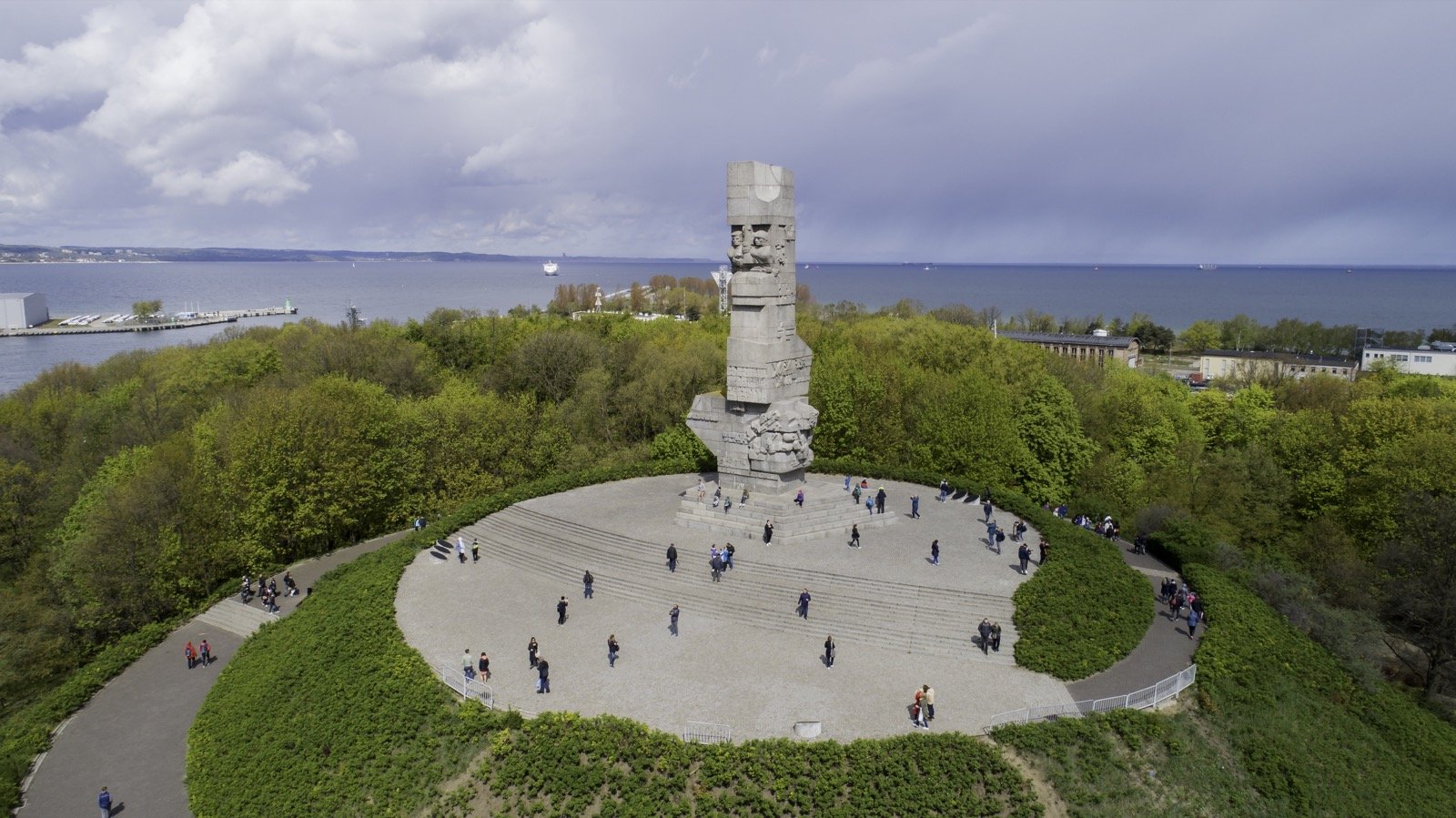
Zhujiajiao Water Town (朱家角)
Canals Like Calligraphy
A short journey from the city lies this ancient town of bridges and boats. Stone pathways wind past teahouses and lantern-lit courtyards. The water flows like ink, and time feels less like a line—more like a ripple.
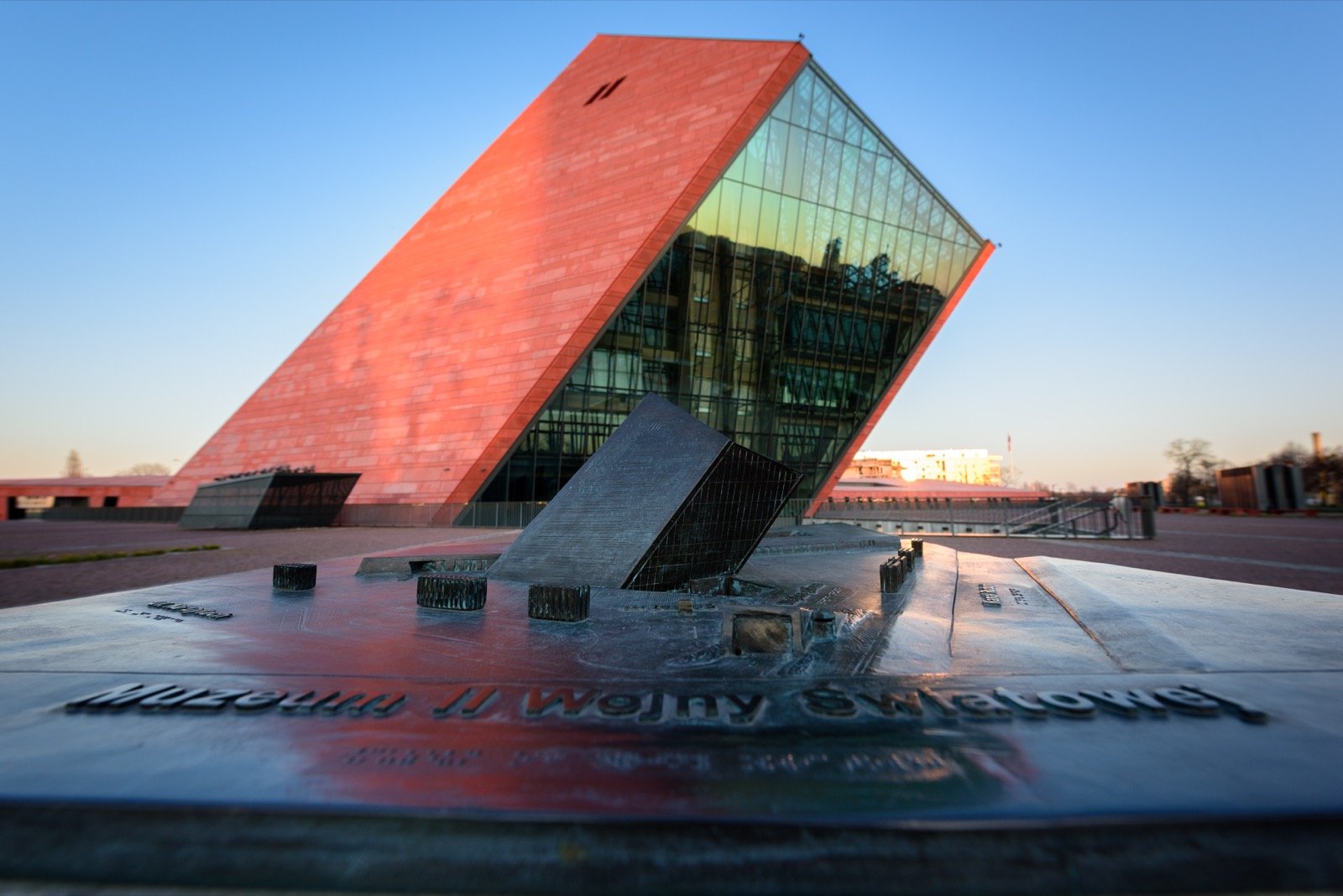
People’s Square (人民广场 – Rénmín Guǎngchǎng)
Pulse of the Modern
At the crossroads of art, commerce, and administration, this central plaza is a meeting of momentum. Beneath its lawns and fountains lie museums, galleries, and the beating metro lines of a city forever in motion.
Top things to see and do in Gdańsk
Check out our recommendation to top things not to miss when visiting Gdańsk
Top museums in Gdańsk
Check out our recommendations
Top hotels in Gdańsk
Check out our recommendations below
Breweries in Gdańsk
Check out our recommendations
Roof-top bars in Gdańsk
Check out our recommendations
Jazz clubs in Gdańsk
Check out our recommendatios below
Night clubs of Gdańsk
Check out our recommendations
Top restaurants in Gdańsk
Check out our recommendations
Top cafés in Gdańsk
Check out our recommendations
Practical information
Some practical information to Gdańsk
Bus Line 210:
- Schedule: The bus runs every 30 minutes on weekdays and every hour on weekends and public holidays, from early morning until late evening.
- Duration: The journey to Gdańsk Główny (main railway station) takes about 45 minutes.
- Cost: Approximately 4.80 PLN (€1.10). Tickets can be bought from vending machines at the bus stop or from the driver, and both cash and card payments are accepted.
- Details: The bus stop is located just in front of the terminal, about 50 meters away. There is a ticket vending machine at the bus stop. You can also buy tickets using an Android app or directly from the driver.
Night Bus N3:
- Schedule: Operates hourly at night, providing a connection to Gdańsk Wrzeszcz railway station.
- Details: This bus runs from 11:36 PM until 4:36 AM, catering to late arrivals.
- Schedule: Trains run every 30 minutes from 4:35 AM to 10:12 PM.
- Duration: The total journey takes about 40 minutes, including a change at Wrzeszcz Station.
- Cost: Around 5.09 PLN (€1.15). Tickets can be purchased from vending machines on the platform or directly from the conductor on the train.
- Details: The train departs from Port Lotniczy Station at the airport and travels to Wrzeszcz Station, where you will need to change trains to reach Gdańsk Główny
- Duration: Approximately 20 minutes, depending on traffic.
- Cost: Around €10-12. Taxis are available directly outside the terminal, or you can book one in advance.
- Details: Taxi stands are easily found at the airport. For reliable service, you can use companies like Airport Taxi Gdańsk
- Komfort: Prywatny transfer oferuje bezpośredni, ekskluzywny przejazd do miejsca zakwaterowania. Choć ta opcja jest droższa niż transport współdzielony, gwarantuje wygodę oraz płynne, bezstresowe doświadczenie dostosowane do Twoich potrzeb.
- Rezerwacja: Te usługi można łatwo zarezerwować z wyprzedzeniem przez firmy takie jak Shuttle Direct, VIP Transfers lub MrShuttle, co pozwala na zabezpieczenie stałej ceny i zapewnienie, że wszystko zostanie zorganizowane przed podróżą.
- Szczegóły: Kierowca powita Cię w hali przylotów, trzymając tabliczkę z Twoim imieniem, i zapewni komfortowy przejazd bezpośrednio do miejsca docelowego. Nie ma potrzeby czekać na innych pasażerów, a usługa obejmuje monitorowanie lotu w czasie rzeczywistym, aby dostosować się do ewentualnych opóźnień, dzięki czemu Twój transport będzie gotowy, gdy tylko wylądujesz.
Getting from Gdańsk City Center to Gdańsk Lech Wałęsa Airport by Car
Here are two different solutions to travel by car from Gdańsk City Center to the airport, considering different preferences for routes and parking options:
Solution 1: Via Trasa Słowackiego (Express Route - Fastest Option)
- Starting Point: Begin your journey from Gdańsk City Center (e.g., Main Town or Old Town area near Długi Targ).
- Route:
- Head west and follow signs for Słowackiego Street (Route 501).
- Merge onto Trasa Słowackiego (Route 501), a modern express road that connects the city center directly to the airport.
- Stay on this road for approximately 11 km (7 miles).
- Follow the airport signs; the road will take you straight to the main terminal's drop-off area or parking lots.
- Driving Time: The drive takes approximately 20 minutes, depending on traffic conditions.
- Parking Options:
- Short-Term Parking: Park in P1 or P2 zones near the terminal if you’re dropping someone off or picking them up. The first 10 minutes are often free.
- Long-Term Parking: Use P3 or P4 lots for extended stays. Parking fees vary depending on duration.
- Benefits: This route is the fastest and most direct, with minimal traffic congestion thanks to the express road.
Solution 2: Via Aleja Grunwaldzka and Obwodnica Trójmiejska (Scenic Option)
- Starting Point: Begin your journey from Gdańsk City Center, ideally near key areas like the Forum Gdańsk shopping mall.
- Route:
- Take Aleja Grunwaldzka (Route 91), the main thoroughfare connecting the city to suburban areas.
- Continue for about 8 km (5 miles), passing through Wrzeszcz and other lively districts.
- Merge onto the Obwodnica Trójmiejska (Tricity Bypass, Route S6) toward the airport.
- Exit at Gdańsk Airport, following signage to the terminal.
- Driving Time: This route takes approximately 25-30 minutes, depending on traffic in Wrzeszcz and the bypass.
- Parking Options:
- Premium Parking: Park in P1 for easy access to the terminal.
- Budget-Friendly Parking: Consider private parking lots near the airport (accessible via shuttle) for cost savings.
- Benefits: This route allows you to see more of the city, including vibrant neighborhoods and suburban landscapes. It’s also useful if you’re combining the drive with errands or stops in Wrzeszcz or Oliwa.
General Tips:
- Traffic Considerations: Morning and evening rush hours can extend travel times. Check live traffic updates via Google Maps or local traffic apps like Yanosik.
- Navigation Tools: Use GPS apps such as Google Maps, Waze, or Apple Maps for real-time navigation.
- Airport Access: Follow clear signage for “Gdańsk Airport” once you approach the vicinity.
Both routes offer a convenient and smooth drive, so choose based on your priorities: speed (Solution 1) or a scenic experience (Solution 2).
Uber
- Dostępność: Uber działa w Gdańsku, oferując wygodne i bezgotówkowe przejazdy.
- Koszt: Ceny różnią się w zależności od ruchu, pory dnia i popytu. Aplikacja podaje szacunkową kwotę przed potwierdzeniem przejazdu.
- Miejsce odbioru: Aplikacja poprowadzi Cię do miejsca odbioru na lotnisku. Postępuj zgodnie z instrukcjami i szukaj oznaczeń miejsc odbioru dla aplikacji ride-hailing.
- Szczegóły: Upewnij się, że kolor samochodu, marka i dane kierowcy odpowiadają tym w aplikacji przed wejściem do pojazdu. Skontaktuj się z kierowcą przez aplikację, jeśli to konieczne (Uber).
Bolt
- Dostępność: Bolt to kolejna popularna opcja ride-sharingu, często tańsza niż inne usługi.
- Koszt: Konkurencyjne ceny, z informacją o kosztach widoczną w aplikacji przed potwierdzeniem przejazdu.
- Miejsce odbioru: Otwórz aplikację Bolt, aby zamówić przejazd. Aplikacja wskaże Ci punkty odbioru na lotnisku.
- Szczegóły: Przejazdy Bolt są znane z szybkości i przystępności cenowej. Upewnij się, że dane pojazdu odpowiadają tym w aplikacji przed wejściem do samochodu (Bolt)
Buses and Trams
Gdańsk has an extensive network of buses and trams operated by ZTM Gdańsk (Zarząd Transportu Miejskiego). This network connects various parts of the city and the surrounding metropolitan area.
- Bus Services: The city operates numerous bus lines, including regular day routes and night services. Buses are a reliable way to travel, especially for reaching areas not served by trams.
- Coverage: The bus network covers extensive routes throughout the city and neighboring regions.
- Frequency: Buses run frequently, with increased services during peak hours. Night buses are available for late-night travel.
- Tram Services: Trams are a convenient option for getting around the city center and other key areas. The tram network is well-developed and includes multiple lines that run frequently.
- Coverage: Trams are primarily used for travel within the city center and key residential and commercial areas.
- Frequency: Trams run frequently, especially during peak hours. They are a popular choice for tourists due to their coverage of major attractions.
Ticketing System
Types of Tickets:
- Single-Ride Tickets: Valid for a single journey on buses or trams.
- Time-Based Tickets: Include 60-minute, 24-hour, 72-hour, and monthly passes. These tickets allow unlimited travel within the specified time frame.
- Group Tickets: Discounts for groups traveling together.
Where to Buy Tickets:
- Ticket Machines: Located at major bus and tram stops and train stations.
- Onboard Purchase: Tickets can be bought from drivers (cash only) on buses and trams.
- Mobile Apps: The ZTM Gdańsk app and other related apps allow ticket purchases via smartphones.
- Online: Tickets can also be purchased through official transportation websites like ZTM Gdańsk and Polregio.
Validation:
- Tickets must be validated upon boarding using the ticket validation machines available on buses, trams, and at train stations.
Useful Links:
Train Services
Local Trains
- SKM (Szybka Kolej Miejska): The SKM provides rapid urban rail services, connecting Gdańsk with nearby cities such as Sopot and Gdynia. This is an efficient way to travel across the Tricity metropolitan area.
- Polregio: This regional rail service connects Gdańsk with other cities and towns in the Pomeranian Voivodeship.
Ticket Purchase:
- Tickets can be purchased at train stations from vending machines, ticket counters, or via mobile apps like the Polregio app.
Useful Links:
Discounted Tickets for Seniors
Eligibility:
- Age Requirement: If you are 70 years old or older, you can use all public transport in Gdańsk (buses, trams, and local trains within the city limits) for free. Similar to Warsaw, you only need to carry an ID that displays your date of birth for verification. This benefit is available to both Polish and non-Polish citizens.
- Identification: Seniors must carry a valid form of identification (e.g., national ID card or passport) to prove their age and enjoy the free travel benefits.
Discounted Attractions for Seniors in Gdańsk:
Gdańsk offers various attractions and cultural experiences where senior citizens can enjoy discounted tickets. Here are some suggestions:
- European Solidarity Centre: Seniors over the age of 65 can purchase a discounted ticket for 20 PLN, compared to the regular price of 30 PLN. This museum and cultural center are dedicated to the history of the Solidarity movement and Poland's struggle for democracy.
- Museum of the Second World War: Seniors aged 60 and older are eligible for discounted tickets at 23 PLN, with the standard adult price being 25 PLN. This museum offers an in-depth look at Poland’s experience during World War II.
- Gdańsk Shakespeare Theatre: Senior citizens can attend performances at a discounted rate of 25 PLN, down from the regular price of 40 PLN. This theatre celebrates the city's historical connection to Shakespearean drama.
- Artus Court Museum: Seniors over 65 can enjoy a reduced ticket price of 8 PLN, instead of the usual 16 PLN. The museum showcases Gdańsk’s rich mercantile and social history.
Gdańsk offers a variety of attractions and museums that provide discounts for senior citizens. Here is a list with some suggestions:
Gdańsk is a vibrant and historic city on the Baltic coast of Poland, offering numerous accessible attractions and activities for visitors with disabilities.
Gdańsk offers a wide range of accessible attractions, services, and facilities to ensure a comfortable and enjoyable visit for travelers with disabilities. From historic sites to modern museums and beautiful parks, the city is dedicated to providing an inclusive experience. For more detailed information and planning resources, visitors can explore the offerings on the International Social Tourism Organisation's website and local accessibility guides.
Practical Tips for Visiting Gdańsk as a Traveler with Disabilities
Planning a trip to Gdańsk can be an exciting experience, and with proper preparation, visitors with disabilities can enjoy a seamless and enjoyable visit. Here are detailed practical tips to help ensure a safe and accessible journey:
1. Research and Planning
1.1. Pre-Trip Research
- Attractions: Before traveling, research the accessibility features of the attractions you plan to visit. Websites of major museums and landmarks often provide detailed information about their accessibility options.
- Accommodations: Look for hotels that offer accessible rooms and facilities. Websites like Booking.com and TripAdvisor have filters for accessibility features.
- Transportation: Familiarize yourself with the accessible transport options available in Gdańsk, including buses, trams, and trains.
1.2. Booking in Advance
- Accommodation: Reserve your hotel room well in advance to ensure availability of accessible rooms.
- Transportation: Book accessible taxis or transportation services ahead of time, especially during peak travel seasons.
1.3. Accessibility Apps and Websites
- Use apps and websites dedicated to accessible travel to find the best routes and services. Apps like Wheelmap can help locate accessible places.
2. Navigating the City
2.1. Public Transportation
- Features: Gdańsk's public transport network includes low-floor buses and trams with designated spaces for wheelchairs. Audio-visual stop announcements help those with visual or hearing impairments.
- Tickets: Purchase tickets in advance or use mobile apps to avoid queues. Ensure you have a valid pass, as inspectors frequently check tickets.
2.2. Accessible Taxis
- Services: Several taxi companies offer vehicles equipped to handle wheelchairs. Specify your need for an accessible vehicle when booking.
- Booking Tips: Use the phrase “na wózek inwalidzki” (for wheelchair) to ensure the correct type of vehicle is dispatched.
3. Accommodations
3.1. Hotel Selection
- Accessibility Features: Look for hotels that offer features such as roll-in showers, grab bars, and wide doorways. The Hanza Hotel is one such example in Gdańsk.
- Location: Choose centrally located hotels to minimize travel time to major attractions and ensure easy access to public transportation.
3.2. Communication
- Special Requests: When booking, communicate any special needs or requests directly with the hotel to ensure your room is properly equipped.
4. Dining and Entertainment
4.1. Restaurant Accessibility
- Accessible Options: Many restaurants in Gdańsk have made efforts to become more accessible, including Mandu Pierogarnia, which offers ramps and accessible restrooms.
- Reservation: Make reservations and inquire about accessibility features. Some restaurants may need advance notice to prepare accessible seating.
4.2. Cultural and Recreational Activities
- Accessible Paths: Many cultural sites, such as the European Solidarity Centre and Oliwa Park, have accessible paths and facilities. Plan your visits to these places to ensure a fulfilling experience.
5. Health and Safety
5.1. Emergency Contacts
- Emergency Numbers: Know the local emergency number (112) and the locations of nearby hospitals.
- Medical Facilities: Research medical facilities and pharmacies near your accommodation. Some hotels may also provide information on nearby medical services.
5.2. Mobility Equipment Rental
- Rental Services: If you require mobility aids, several services in Gdańsk offer rentals of wheelchairs, scooters, and other equipment. It’s advisable to arrange these rentals in advance.
6. Language and Communication
6.1. Learning Key Phrases
- Basic Polish: Learning a few key phrases in Polish can be very helpful. For example, “Proszę o pomoc” means “Please help.”
- Language Apps: Use translation apps to assist with communication in restaurants, hotels, and shops.
6.2. Local Assistance
- Friendly Locals: Poles are generally hospitable and willing to assist. Don’t hesitate to ask for help if needed, especially from younger people who are more likely to speak English.
Below you can find some listings of tourist attractions, sights, restaurants etc. that are easily accessible.
Gdańsk with a dog
Gdańsk is a dog-friendly destination!
Gdańsk is a remarkably dog-friendly city, offering various amenities and activities tailored for dog owners and their pets. The city has numerous pet-friendly hotels, including top-rated ones like PURO Gdańsk Stare Miasto and Holiday Inn Gdańsk - City Centre, ensuring comfortable stays for visitors with dogs. Some accommodations, like the IRS ROYAL APARTMENTS, even welcome pets of any size without additional fees.
For outdoor activities, Gdańsk features dog-friendly beaches, such as the one located in the Old Town area.
These beaches allow dogs to enjoy the sand and sea while their owners take in the beautiful Baltic coastline. The city also offers scenic walks and historical tours where dogs are welcome, like the Gdańsk City Sights & History Guided Walking Tour, which covers the rich cultural tapestry of the city.
Gdańsk has a variety of pet services available, including pet sitters, dog walkers, and grooming services, ensuring that your pet's needs are met while you explore the city.
Additionally, the local restaurants and cafes often have outdoor seating areas where dogs are allowed, making it easier for pet owners to dine out without leaving their furry friends behind.
Overall, Gdańsk's combination of pet-friendly accommodations, activities, and services make it an excellent destination for travelers with dogs, ensuring a pleasant and inclusive experience for all visitors
When traveling with a dog to Gdańsk, it’s essential to be aware of the specific rules and regulations to ensure a smooth and enjoyable visit. Here are some key points to consider:
- Public Transport: Dogs can travel for free on Gdańsk's public transport, but they must be on a leash and wear a muzzle. You also need to carry proof of current vaccinations.
- Dog Parks and Runs: Gdańsk offers several dedicated dog parks where dogs can run off-leash. These areas are fenced and often equipped with water bowls and agility equipment. Some notable locations include the parks in Przymorze Wielkie and Ujeścisko-Łostowice.
- Beaches: From September to June, dogs are allowed on all Gdańsk beaches. During the summer months, dogs are prohibited from lifeguarded swimming areas but can still enjoy designated dog beaches, such as the one between entrances 34 and 36 in Brzeźno.
- Leash Laws: In public places, dogs must be kept on a leash. For breeds considered dangerous, additional regulations may apply, such as mandatory muzzling.
- Pet Waste: It is mandatory to clean up after your dog in all public areas. Failure to do so can result in fines up to 500 PLN.
- Vaccinations and Health: Keep your dog’s vaccination records updated and carry them with you, especially if you plan to use public transport or visit certain parks and beaches.
- Dog-Friendly Places: Many cafes, restaurants, and hotels in Gdańsk welcome dogs, making it easy to include your pet in various activities. Always check individual policies before visiting.
- Training and Behavior: Dogs should be well-behaved and socialized to ensure they can interact safely with other dogs and people in public spaces.
- Emergency Services: Familiarize yourself with local veterinary services and emergency contacts in case your dog needs medical attention while you’re away from home.
By keeping these rules and guidelines in mind, you can ensure a pleasant and compliant visit to Gdańsk with your furry friend.
What to do in Gdańsk with your dog
Check out our recommendations


